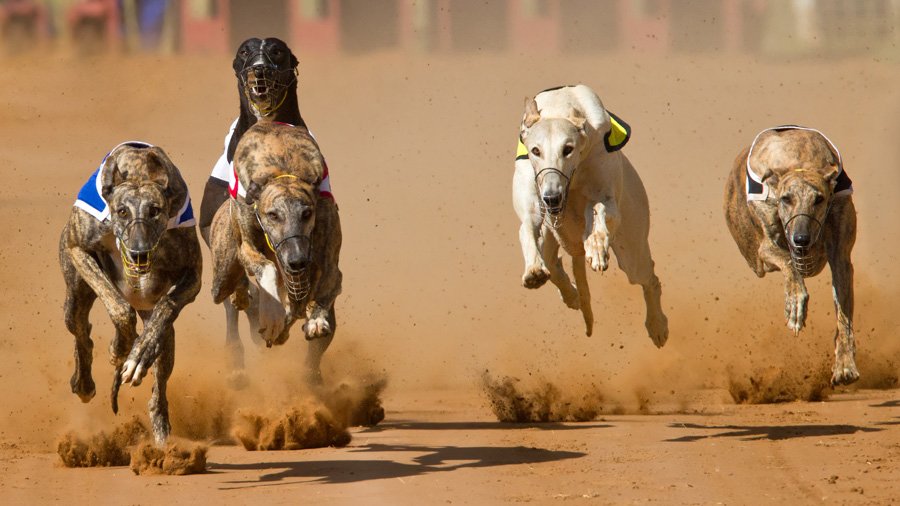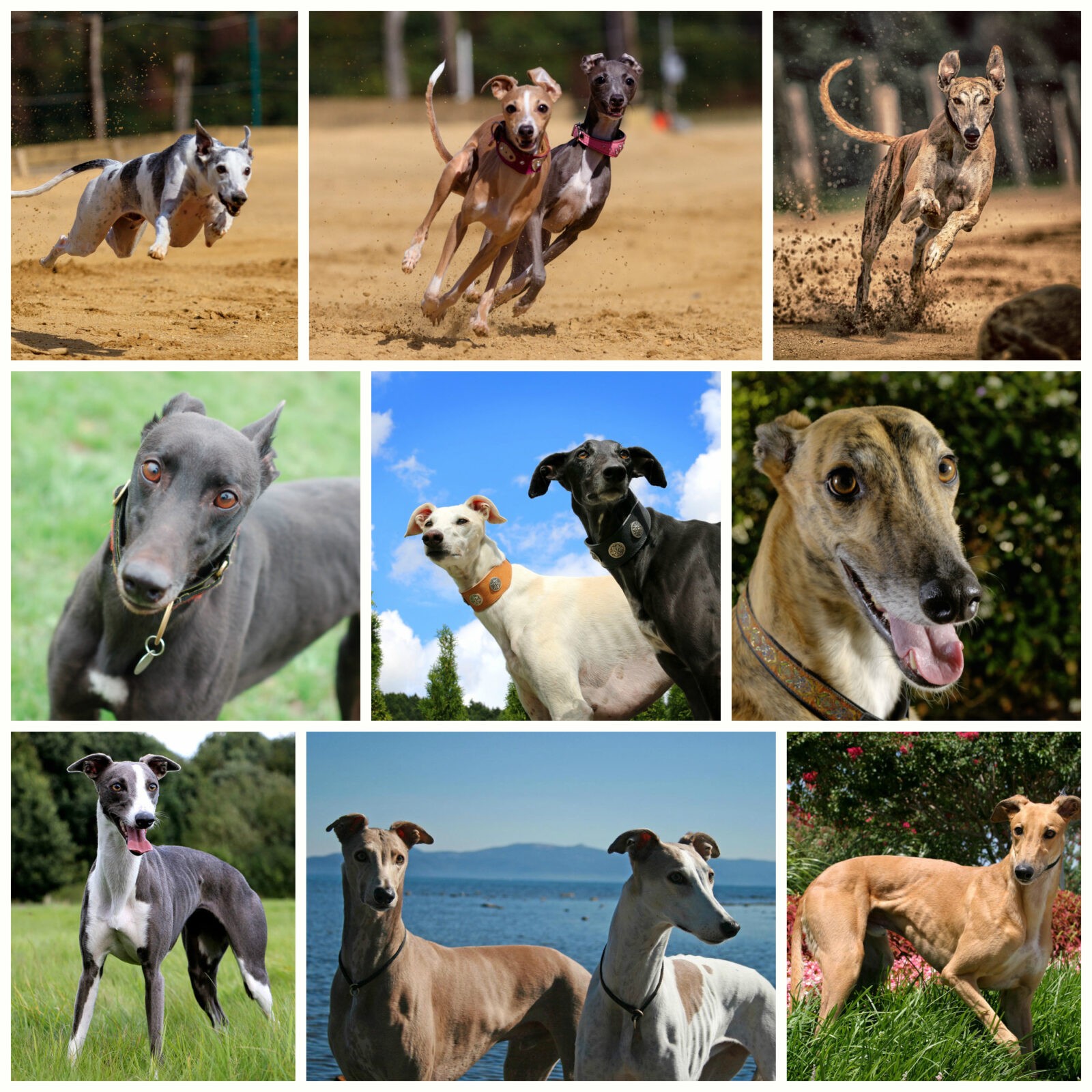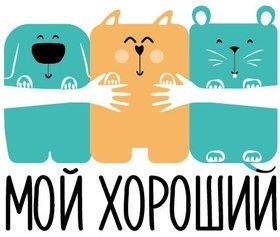
Brief description of the Greyhound breed
Greyhounds - enough big dogs, their height at the withers is 70-76 cm in males, 67-71 cm in females. Greyhounds weigh between 25-35 kg. Life expectancy is about 12-15 years. These dogs have a very slender yet muscular body. Their head is long, proportional to the body, the skull is flat, with a slight transition from the forehead to the muzzle. The eyes are oval in shape, have a dark tint, very intelligent and lively. The ears are thin, raised on the cartilage, small in size. A distinctive feature of the Greyhounds - these are strong and powerful jaws with a scissor bite. Neck of these dogs very muscular, long, smoothly passing into the shoulders. The back is wide, long, has a rectangular shape, convex in the lumbar region. The chest is deep and wide. The ribs are pronounced, deep. The belly of dogs of this breed is tightened. Greyhound limbs are long, bony, straight, hips and shoulders are muscular. The tail is set low, long, tapering towards the tip. The coat is thin, thick, soft, short. Color options are quite varied. - white, black, red, blue, brindle, fawn, muruga, white with markings of the mentioned shades.
basic information
| Breed name: | Greyhound |
| Country of origin: | United Kingdom |
| The time of the birth of the breed: | 6th century BC e. |
| Type of: | greyhounds |
| The weight: | 25 - 35 kg |
| Height (height at the withers): | 67 - 76 cm |
| Life Expectancy: | 12 - 15 years old |
|
ICF classification:
|
Group 10, Section 3, Number 158 |
| Puppies price: | 250 – 770 $ |
| Most popular nicknames: | list of greyhound names |
Assessment of Greyhound Breed Characteristics
| Adaptability
(a definition meaning how easily a dog can adapt to changes in life) |
🐶🐶🐶🐶🐶 |
| Shedding level
(Level and frequency of hair loss in the animal) |
🐶🐶🐶 |
| Tenderness level
(The level and amount of tenderness and affection that the dog gives in return for attention to itself) |
🐶🐶🐶🐶🐶 |
| Exercise needs
(Dog's daytime activity level) |
🐶🐶 |
| Social need
(The required number of contacts of the dog with other animals, as well as people) |
🐶🐶🐶 |
| Apartment content
(A factor that determines the level of noise and other inconveniences that a dog can deliver to owners in relation to the size of the apartment to the size of the dog) |
🐶🐶🐶🐶🐶 |
| Grooming
(The number of bathing, brushing, and the number of professional grooming sessions required for the dog) |
🐶 |
| Friendliness in an unfamiliar environment
(Features of the behavior of a dog in a society with strangers or in an unfamiliar environment) |
🐶🐶🐶🐶🐶 |
| Tendency to bark
(Tendency to bark and its frequency and volume) |
🐶🐶 |
| Health issues
(Potential health status of the dog) |
🐶🐶🐶 |
| Territoriality
(The dog's tendency to protect his home, yard, or even his owner's car) |
🐶 |
| Friendliness to cats
(The tendency towards tolerance for cats and decreased manifestation of hunting instincts) |
🐶🐶 |
| Intelligence
(The ability of the dog to think and solve emerging difficulties (not to be confused with learning!) |
🐶🐶🐶 |
| Education and training
(The level of difficulty in training the dog to perform certain actions) |
🐶🐶🐶 |
| Friendliness to children
(A factor that determines how friendly a dog is to children, whether he likes to play with them and tolerate some childish pranks) |
🐶🐶🐶🐶🐶 |
| Game activity
(The concept is determined by its very name, and, as a rule, is found in almost all dogs) |
🐶🐶🐶 |
| Observation
(The ability of a dog to detect the presence of a stranger on its territory) |
🐶 |
| Friendliness to other dogs
(The tendency of the dog to find common language with his other relatives) |
🐶🐶🐶🐶🐶 |
Greyhound photo:

Greyhound history
Greyhound character
Maintenance and care
Greyhounds - quite unpretentious in the care of dogs. The short coat can be combed out several times a week with a rubberized glove or brush to remove dead hairs and skin particles. Bathing these dogs is done as it gets dirty (most often about 2 times a year), after long walks, you only need to wash the dog's paws. It is also necessary to monitor the length of the claws, cutting them several times a month with a nail cutter. In general, all grooming procedures (claw trimming, brushing teeth, eyes and ears, checking the coat for the presence of blood-sucking parasites) should be carried out from the early childhood of the dog, then the animal will not panic.
As walks for greyhounds, daily promenades in calm places, if possible, far from the tracks (parks, groves), are suitable. If there is no opportunity to take the Greyhound to a sparsely populated and calm place, then you should not lose your vigilance by letting the animal off the leash - this is dangerous both for the dog itself (it can get hit by a car) and for other animals (a Greyhound hunter can mistake small dogs and cats for game). It's not bad if the owner has the opportunity to go out into nature, because there the dog can run around as much as he can. It will also be great if the owner of a dog of this breed is a fan of cycling or regular jogging. - Greyhound will gladly accompany him.
Training and education
The training of English greyhounds begins with establishing contact between the dog and its owner. Since Greyhounds rarely have an aggressive disposition, do not try to take a leading position among people and animals, it will not be difficult to make this dog your friend. As puppies, Greyhounds are active and very sociable, but you should not allow the baby to cross the line. During education, these dogs need praise, but they do not tolerate rudeness and the use of force on the part of the owner. A bad attitude deeply hurts these naturally kind dogs.
In cases where Greyhounds are acquired as companion dogs (i.e. will not participate in the capture of a wild animal), they can undergo a general training course, learning basic commands, becoming even more obedient and obeying the owner on demand. Those dogs that will help the owner during the hunting of game are often trained in coursing (chasing a mechanical hare over rough terrain) and racing (circular movement of the dog behind a mechanical hare) - traditional sports for hunting dogs. Greyhound training can be done on your own or entrusted to a professional. The main thing is that there is contact with the dog, there is trust of the animal to the person. And in terms of performance, this dog breed at a high level due to innate high intelligence and lack of a rebellious nature.
Health and disease of Greyhound dogs
Some interesting facts
- Greyhounds have long been recognized as the fastest dogs in the world, with English greyhounds outpacing even such high-speed “masters” as African wild dogs (in a sprint their speed can exceed 65 km / h) and salukis (their speed is up to 50 km / h). Greyhounds, on the other hand, are capable of speeds up to 60-70 km / h (the official speed record was held by a dog named Star Title and was 67.32 km / h), for which they are sometimes called "cheetahs of the dog world." By the way, the speed of a cheetah can reach 110-115 km/h. However, Greyhounds - they are runners over relatively short distances, when compared with the same Salukis (Persian greyhounds), which can run and chase game at a slower speed, but for a very long time.
- The name of the breed itself literally translates as "gray hound", however, there is an opinion that the name of the breed was based on the Old English "crickhound", which means "grasshopper hound". And over time, "crickhound" became "greyhound". This version is justified due to the structure of the body of this dog and the speed of its jump, if we compare the insect of a grasshopper and a Greyhound. The grasshopper, like the English hound, has rather powerful limbs and is able to travel long distances.
- There is an old legend about a Greyhound named Guinfort, who lived in the French Lyon in the 13th century, according to which a dog of this breed has become a symbol of patronage for children. Greyhound Ginforth, owned by a knight, saved a child from death from a poisonous snakebite by turning over the cradle with the baby and cracking down on the reptile. And the father, not understanding, seeing the bloodied mouth of the dog and the upturned cradle, considered that the dog had harmed the child. So Ginforth was killed. And the knight, until the end of his days, could not forgive himself for the death of a four-legged friend, because when he came to himself, he saw an unharmed child on the floor and a dead viper. Despite the protests of the Catholic Church, Ginfort began to be revered by the people as a saint, believing that he protects young children from illness and adversity. This sad story about "Saint Ginfort" formed the basis of many works of the past. Not only a dog from France became famous because of its courage, in neighboring Belarus in the city of Nesvizh a monument was erected to a Greyhound who saved his master from inevitable death from the claws and fangs of an angry bear. The dog himself died, switching the attention of the predator to himself, giving the owner a chance to save.
Nurseries and breeders
We borrowed material from the wonderful site of our partners DOGCATFAN.COM about cats and dogs, the author dogcatfan
